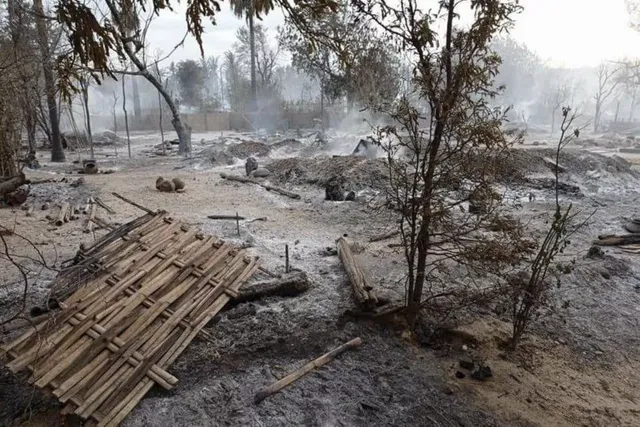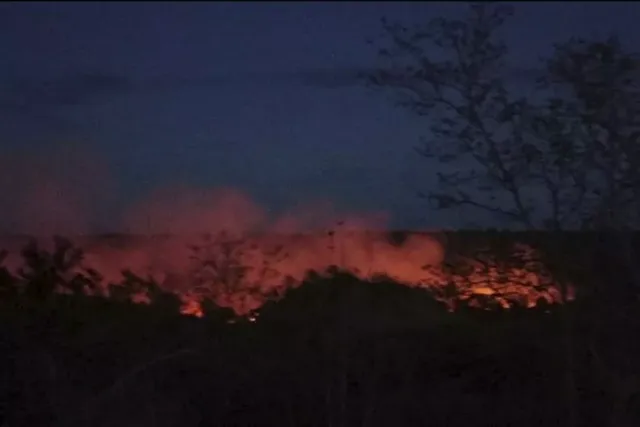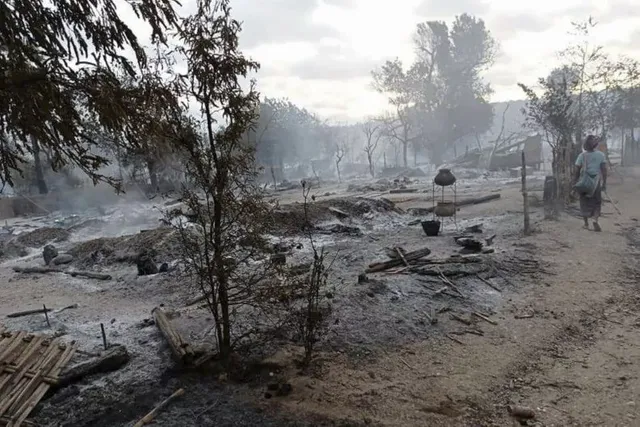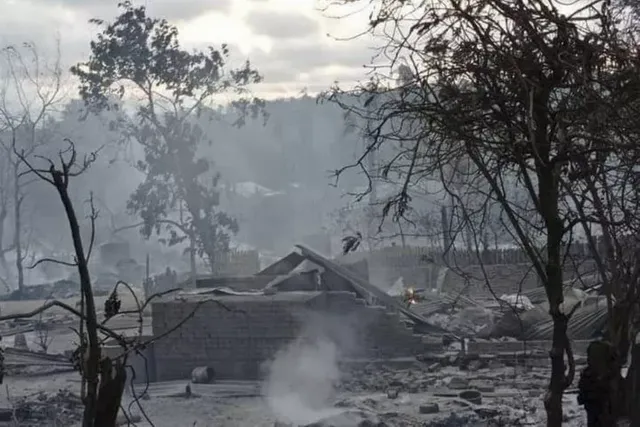Photographs Show Seething Remnants of Myanmar Town, Consumed to Ground by Government Troops
Stunning photographs show the seething remnants of a Myanmar town after its vast majority was caught fire by government troops Tuesday, a resident told the Related Press, affirming different reports.
The anonymous occupant of the now-annihilated Kinma town in focal Myanmar said he accepted military powers came to look for individuals from a town guard power in resistance of the nation's decision military junta. The nearby guard power told occupants of the soldiers' appearance heretofore and after homes were looked at, the soldiers annihilated the town.
"We figure it isn't finished. We will move to different towns. Regardless of whether we return to our town, there is no spot to remain because everything is scorched," the resident told the Related Press when inquired as to whether he would get back to Kinma town.
The resident said he accepted three setbacks that came about because of the annihilation and only 10 of 237 houses remain. Myanmar's military took over in February in the wake of expelling Aung San Suu Kyi's chosen government.
For more revealing from the Related Press, see beneath.

The assault is the most recent illustration of how brutality has gotten endemic in quite a bit of Myanmar lately as the junta attempts to quell an early cross-country rebellion. After the military held onto power in February, a peaceful common insubordination development emerged to challenge the tactical principle, however, the junta's endeavor to subdue it with lethal power-filled instead of suppressed opposition.
Photographs and recordings of crushed Kinma town in the Magway district that coursed broadly via online media on Wednesday showed a large part of the town smoothed by fire and the scorched assortments of livestock. One report said the town had around 1,000 occupants.

The resident, who asked that his name not be utilized as a result of dread of government responses, said most inhabitants had effectively escaped when warriors shooting firearms entered the town without further ado before an early afternoon on Tuesday.
The town guard power had been set up to ensure against the junta's soldiers and police. Most such neighborhood powers are softly outfitted with custom-made chasing rifles.
Just four or five individuals were left in the town when they started looking through houses in the early evening. At the point when they don't discover anything, they started setting the homes ablaze, he said.

"There are a few woodlands simply close by our town. The majority of us escaped into the woods," he said.
The resident said he accepted there were three losses, a kid who was a goat-herder who was shot in the thigh, and an old couple who couldn't escape. He accepted the couple had passed on however a few media reports said they were absent.
Inquired as to whether he intended to return to the town, he said: "No, we dare not to."
The town guard powers are focused on shaping a future resistance administrative armed force, and some have aligned themselves with ethnic minority bunches inline regions that have been battling for quite a long time for self-governance from the focal government.
Help Kinn Ma village. Almost the whole village was burned by Myanmar Military. Not only the buildings and foods were destroyed but also the old couple and animals were died in fire by those terrorist Police and Military.
— Naw Say (@NawSay5) June 16, 2021
TW // dead , burnt #June16Coup #WhatsHappeningInMyanmar pic.twitter.com/Pmxcy4hwne
The majority of the fiercest battling happens in the boundary locales, where government powers are conveyed in regions constrained by ethnic gatherings like the Jaw in the west, the Kachin in the north, and the Karenni in the east.
The occurrence in Kinma pulled in uncommon consideration because the Burman, or Barmar ethnic gathering, the nation's force holding larger part, is overwhelming in the Magway area and it is surprising for them to be focused on for such serious measures.
The military consumed numerous towns of the Muslim Rohingya minority in 2017 in a severe counterinsurgency crusade in the western province of Rakhine that drove more than 700,000 to look for wellbeing across the boundary in Bangladesh.
There is broad bias against the Rohingya and not many in Myanmar fought the military's treatment of them, however global courts are currently thinking about whether it established slaughter. A few groups remarking Wednesday via online media said the consumption of Kinma made Rohingya cases of abuse more solid.
